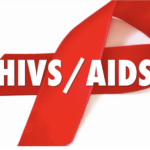
About 42 new HIV (human immunodeficiency virus) infections are recorded among the adult and child population in the country every day, according to the Ghana AIDS Commission (GAC) 2024 National and Sub-National HIV Estimates and Projections.
Presently, the nation has 334,721 persons living with HIV, comprising 105,460 males, representing 31.5 percent, and 229,261 females, representing 68.5 percent.
Mr. Ahmed Ibrahim Bimbilla, the Bono, Bono East, and Ahafo Regional Technical Coordinator of the GAC, disclosed the figures and added that HIV estimate data remained critical for planning and understanding the magnitude of the HIV and AIDS epidemic in the country.
In an interview with the Ghana News Agency (GNA) in Sunyani, Mr. Bimbilla said the nation’s new HIV infections stood at 15,290, comprising 4,987 males (32.6 percent) and 10,303 females (67.4 percent).
He added that AIDS-related deaths in the country currently stand at 12,614, including 5,445 males and 7,159 females. He noted that 229 deaths are averted every week due to the provision of Antiretroviral Therapy (ART) services.
Giving a regional breakdown, Mr. Bimbilla said the North East Region recorded the lowest HIV population of 1,717, while the highest populations were found in Greater Accra (77,821), Ashanti (63,159), and Eastern (44,792).
Seven regions recorded HIV populations below 10,000, including Ahafo, Upper East, Northern, Upper West, Oti, Savannah, and North East.
Mr. Bimbilla indicated that HIV prevalence remained highest in the Bono Region (2.22 percent), followed by the Eastern (2.08 percent) and Ahafo (1.88 percent) regions, while the North East Region recorded the lowest prevalence of 0.43 percent.
He added that five regions — Oti, Upper East, Savannah, Northern, and North East — had HIV prevalence rates below 1.0 percent.
According to him, Greater Accra, Ashanti, and Eastern regions recorded the highest numbers of new HIV infections, with 3,436, 2,997, and 2,019 cases respectively, while the North East Region recorded the lowest at 97 cases.
Eleven regions, including Bono, Volta, Bono East, Western North, Ahafo, Upper East, Northern, Upper West, Oti, Savannah, and North East, recorded fewer than 1,000 new HIV infections.
On the way forward, Mr. Bimbilla said the estimated reduction in HIV prevalence, new infections, and AIDS-related deaths was a positive development, which could be attributed to the increased uptake of ART services.
He noted that the reduction in new infections and AIDS deaths was expected to help the country achieve epidemic control and stressed the need to sustain efforts toward eliminating HIV and AIDS.
Such efforts, he said, should include increased awareness, testing, and access to treatment to ensure the country attains epidemic control.